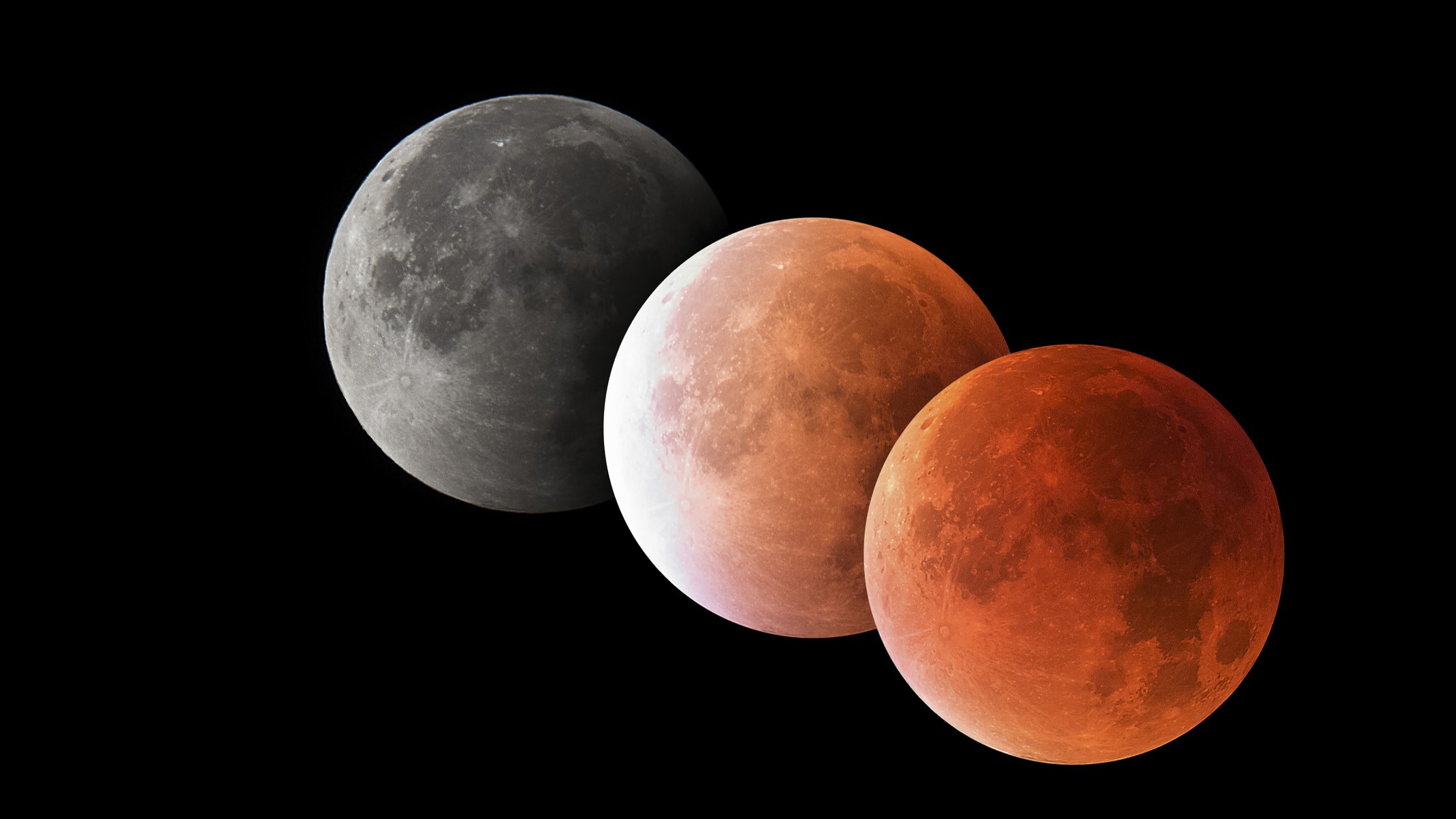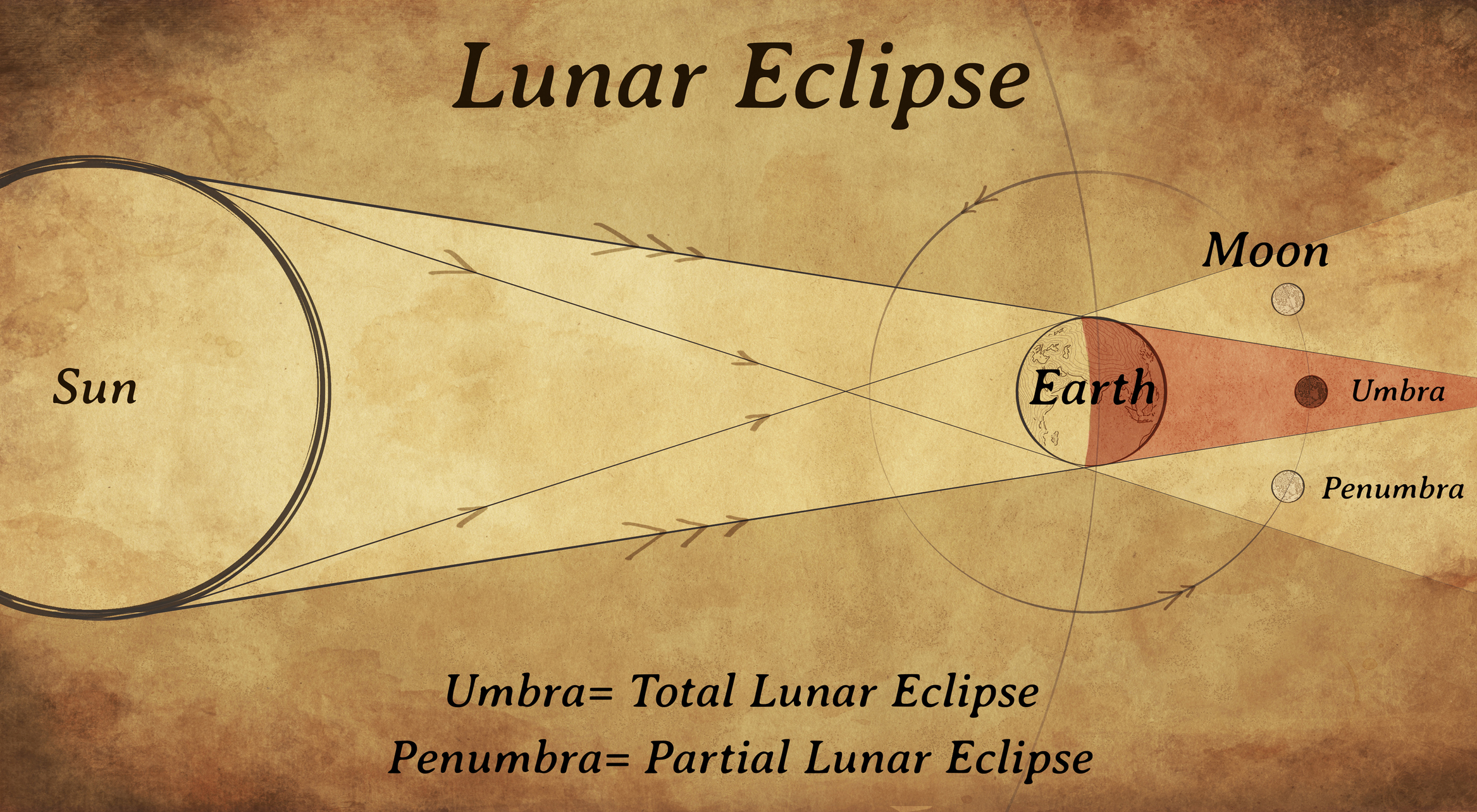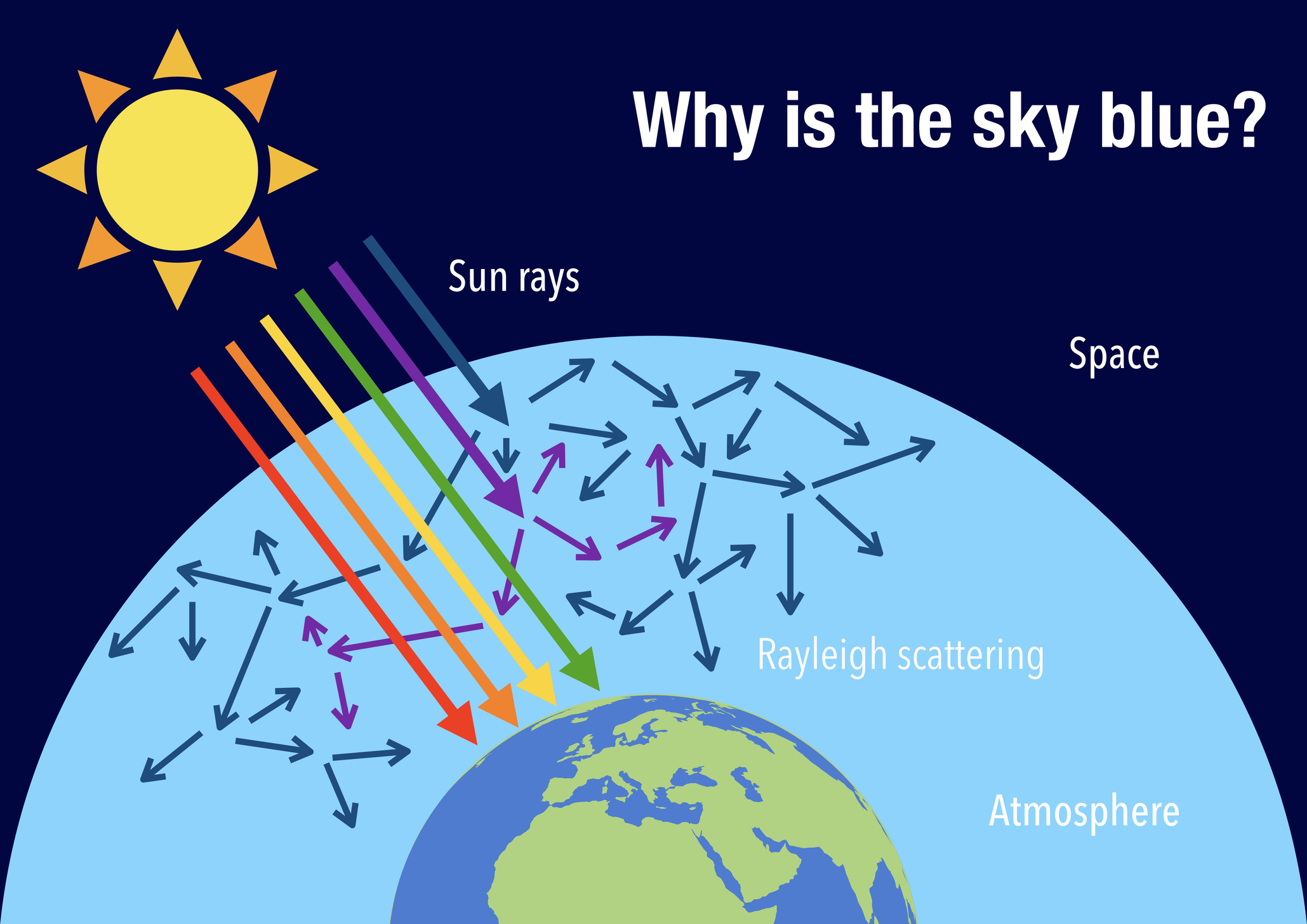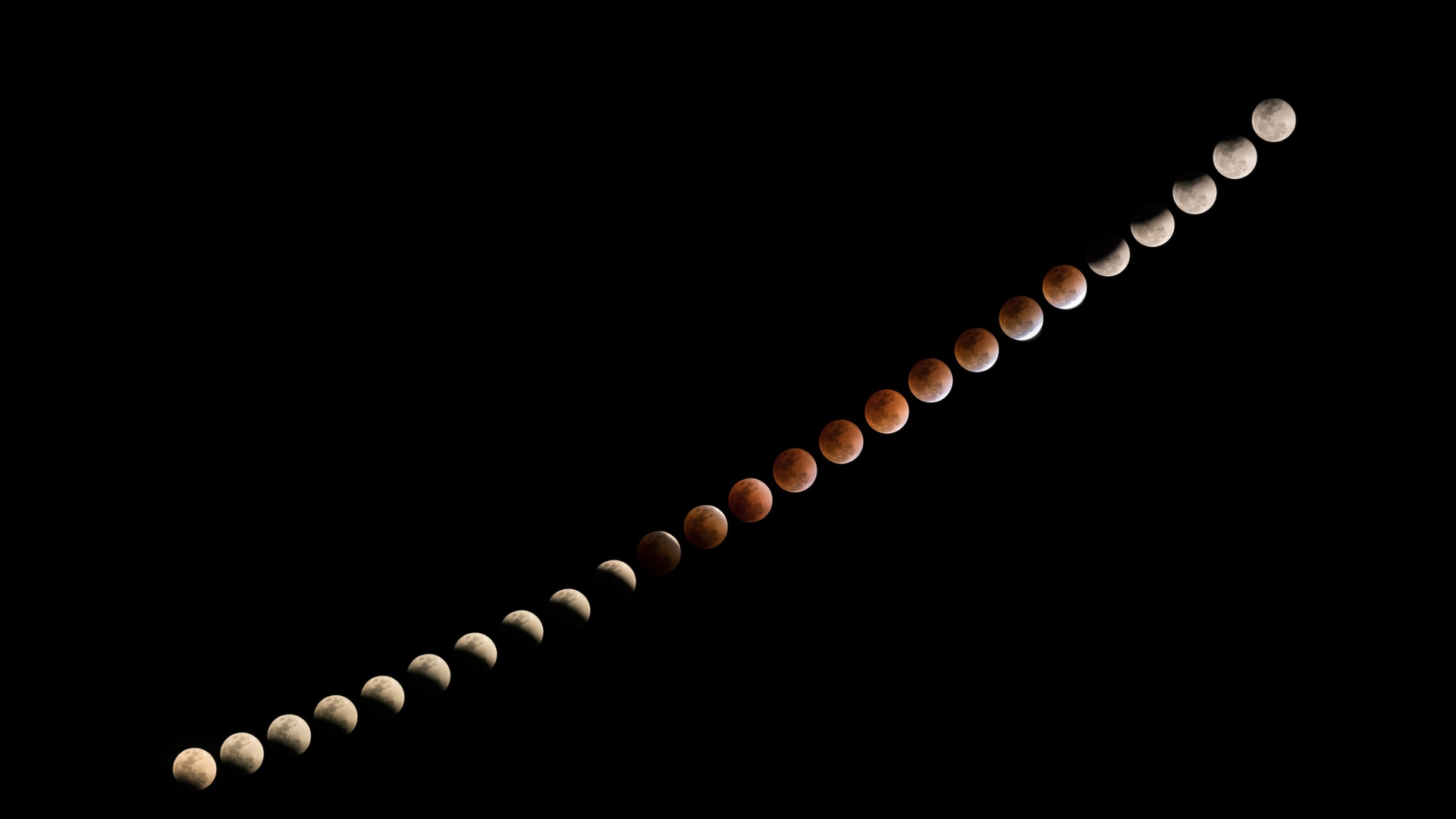Why does the moon turn red during a total lunar eclipse?
We explore why the lunar surface turns a beautiful reddish color to become a "blood moon" during the totality phase of a total lunar eclipse.

A total lunar eclipse happens when a full moon moves through Earth's umbra, its dark shadow in space. As it does so, something spectacular happens: The entire moon turns reddish — an event that's often called a "blood moon."
Patient observers can watch this process happening as the gray full moon gradually turns red; displays ever-changing reddish, pinkish and orange hues for a short period; and then slowly returns to normal as it exits Earth's shadow.
But what are the physics behind this stunning event? Here's why the moon turns red during a total lunar eclipse.
Phases of a total lunar eclipse
Lunar eclipses come in three types, which affect whether the moon turns red. The first type, a penumbral eclipse, occurs when a full moon enters Earth's fuzzier outer shadow in space, called its penumbra. During this kind of very slight eclipse, the full moon loses some of its brightness for a few hours.
Related: Lunar eclipses: When, where and how to see them
The second type, a partial lunar eclipse, happens when the full moon first enters the penumbra, with some of its surface also moving through Earth's umbra. During a partial eclipse, the edge of Earth's shadow can be seen moving across a portion of the lunar surface, substantially darkening it. That dark area is as red as the moon appears during a total lunar eclipse. But to the human eye, it's very difficult to notice, because the bright portion of the moon is overwhelming.

Only during a total lunar eclipse does the surface of the moon look very obviously red to the human eye. That's because the entire moon enters the umbra. According to the National Weather Service, totality during a total lunar eclipse lasts from about 30 minutes to over an hour. Only when the full moon fully enters Earth's umbra does the lunar surface turn red. That's because the umbra completely blocks direct sunlight from falling onto the moon.
As it enters the umbra, the moon doesn't turn completely black; instead, it looks reddish. So why isn't the totally eclipsed moon dark and invisible? It's because Earth's atmosphere bends, filters and refracts sunlight, which is projected onto the moon.
Why the moon turns red
The moon is red during the totality phase of a total lunar eclipse for the same reason sunsets are orange. Sunlight is made up of many colors, each with a different wavelength. Light toward the blue end of the spectrum has a short wavelength, while light toward the red spectrum has the longest wavelength. Because blue light has a short wavelength, it more easily strikes atoms in Earth's atmosphere and is scattered. That's why the sky is blue.

During a sunset, the observer is looking along the curvature of Earth, which is the warmest, thickest part of Earth's atmosphere, with a high concentration of atoms. Because red light has the longest wavelength, it travels more easily through them to reach the observer's eyes. It's the same during totality in a total lunar eclipse, because the only sunlight that reaches the moon is being filtered by the thickest part of Earth's atmosphere. It's as if all the world's sunrises and sunsets were projected onto the moon, according to NASA. This effect is known as Rayleigh scattering.
What affects the shade of red during a total lunar eclipse?

Although Rayleigh scattering explains why the moon looks red during a total lunar eclipse, the exact shade of red comes down to celestial geometry and atmospheric conditions. As the moon passes through the umbra, one of its limbs is closest to the center of that shadow, so it appears darker than the opposite limb that's farthest away. That changes as it moves through the shadow, so the look of the totally eclipsed moon changes constantly during totality.
The brightness of the moon during totality depends on how much dust is in Earth's atmosphere, according to the National Weather Service. The exact shade of red is determined by the levels of dust particles, water droplets, clouds, mist and even volcanic ash in the atmosphere, according to Timeanddate.com. As a result, the whole or parts of a totally eclipsed moon can appear dark red, brown, orange and/or pink.
Additional resources
Watch the "Lunar Eclipses Explained" mini-documentary from PBS Learning and if you want to explore even further, find out why sunsets are red with this informative guide from the U.K. Met Office.
BIBLIOGRAPHY
Time and Date. “Why Does the Moon Turn Red?” Accessed Feb. 25, 2025. https://www.timeanddate.com/eclipse/why-does-moon-look-red-lunar-eclipse.html
NASA. “What You Need To Know About the March 2025 Total Lunar Eclipse.” Accessed Feb. 6, 2025. https://science.nasa.gov/solar-system/moon/what-you-need-to-know-about-the-march-2025-total-lunar-eclipse/
National Weather Service. “Solar and Lunar Eclipse.” Accessed Feb. 25, 2025. https://www.weather.gov/fsd/suneclipse
Join our Space Forums to keep talking space on the latest missions, night sky and more! And if you have a news tip, correction or comment, let us know at: community@space.com.
Get the Space.com Newsletter
Breaking space news, the latest updates on rocket launches, skywatching events and more!

Jamie is an experienced science, technology and travel journalist and stargazer who writes about exploring the night sky, solar and lunar eclipses, moon-gazing, astro-travel, astronomy and space exploration. He is the editor of WhenIsTheNextEclipse.com and author of A Stargazing Program For Beginners, and is a senior contributor at Forbes. His special skill is turning tech-babble into plain English.










